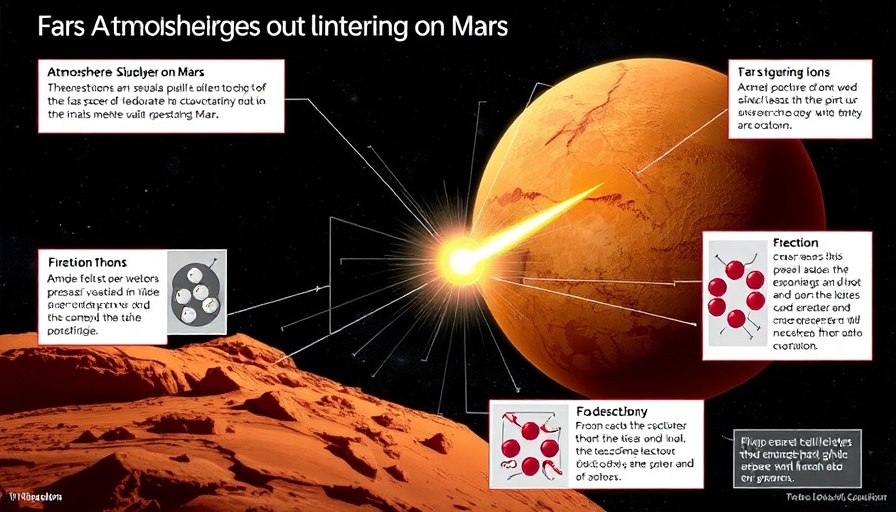
Understanding Atmospheric Sputtering: A Key Insight from Mars
Mars has fascinated scientists for centuries. Its rugged terrain and history of water presence make it a prime target for research. In a breakthrough study, researchers have made the first direct detection of atmospheric sputtering on Mars, shedding light on how the planet’s atmosphere has been affected by solar influences over time.
The Discovery: Using NASA’s MAVEN Probe
A team of planetary scientists and astrophysicists made this discovery using data from NASA's MAVEN (Mars Atmosphere and Volatile EvolutioN) probe. By analyzing nine years of detailed satellite data, they determined that argon densities in Mars’ atmosphere varied with solar wind conditions and electric fields. This research suggests that lighter argon isotopes are consistently lost due to sputtering, a phenomenon where solar wind ions bombard atmospheric particles, propelling them into space. The study is pivotal as it documents how atmospheric sputtering plays a significant role in making Mars cold and dry, especially given the planet’s lack of a global magnetic field.
The Role of Solar Activity in Atmospheric Changes
The MAVEN team's findings were particularly notable during a solar storm, which intensified the differences in argon densities. This evidence makes it clear that atmospheric sputtering is not just an occasional byproduct of solar activity but an ongoing process that has likely shaped Mars’ climate for millennia. As researchers noted, this data aligns with theories that atmospheric sputtering has been a dominant factor in the loss of water on the Martian surface.
A Historical Perspective: Why This Matters
The implications of this discovery extend beyond Mars. Understanding sputtering helps scientists piece together the planet's climatic history, revealing how it transitioned from a warmer, wetter environment to the cold, arid landscape observed today. This transition is crucial for future missions to Mars, particularly as human exploration looms on the horizon.
Future Implications: What’s Next for Mars Exploration?
This research enhances our understanding of planetary atmospheres under the influence of solar radiation. It opens up questions about other celestial bodies, such as Venus and exoplanets, which may undergo similar processes. The ongoing study of solar interactions with planetary atmospheres could inform our search for habitable worlds beyond Earth.
Final Thoughts: The Importance of Continued Research
These findings emphasize the need for sustained observation and exploration of Mars. As we learn more about its atmospheric dynamics, we prepare for future human exploration, aiming to unlock the mysteries of the Red Planet. Keeping a watchful eye on Mars and enhancing our technological capabilities could pave the way for unprecedented advancements in space science.
 Add Row
Add Row  Add
Add 




Write A Comment